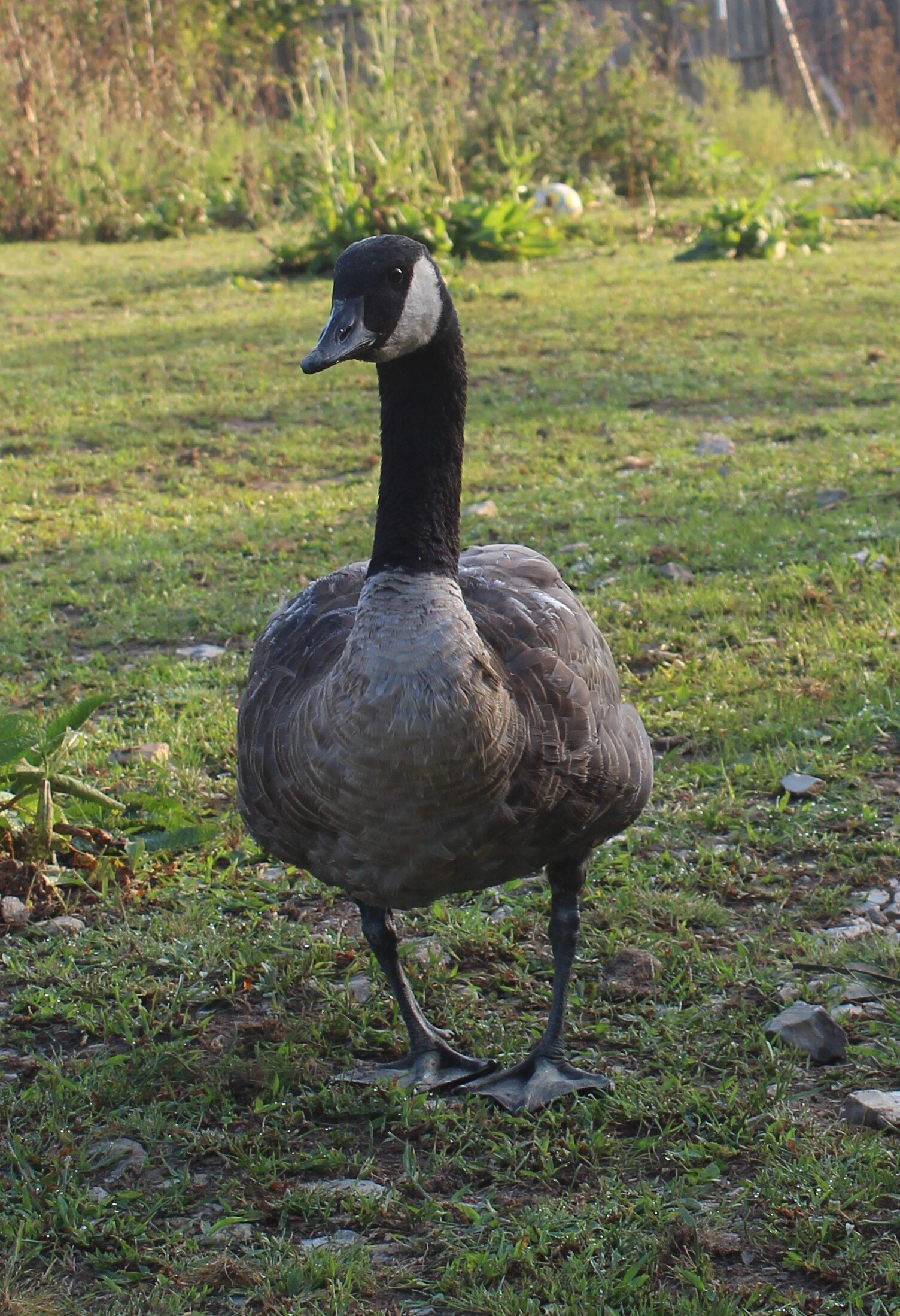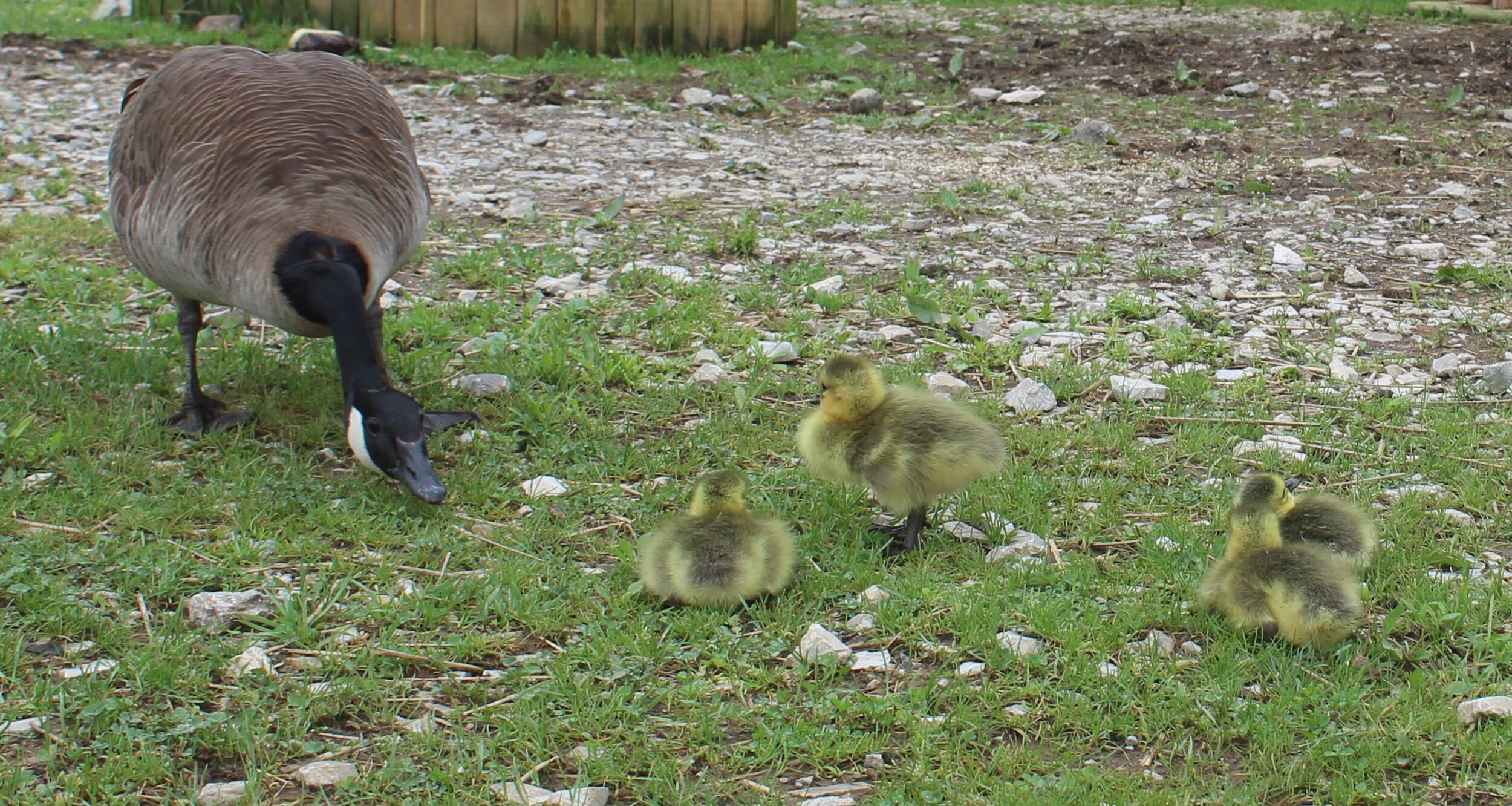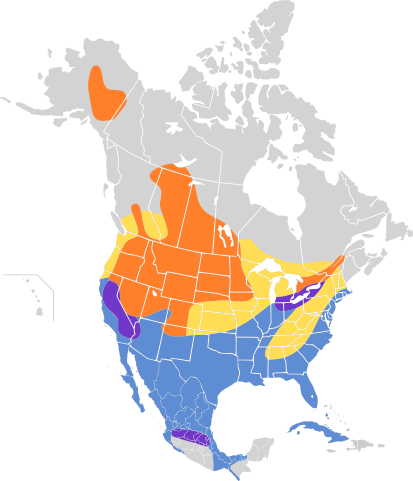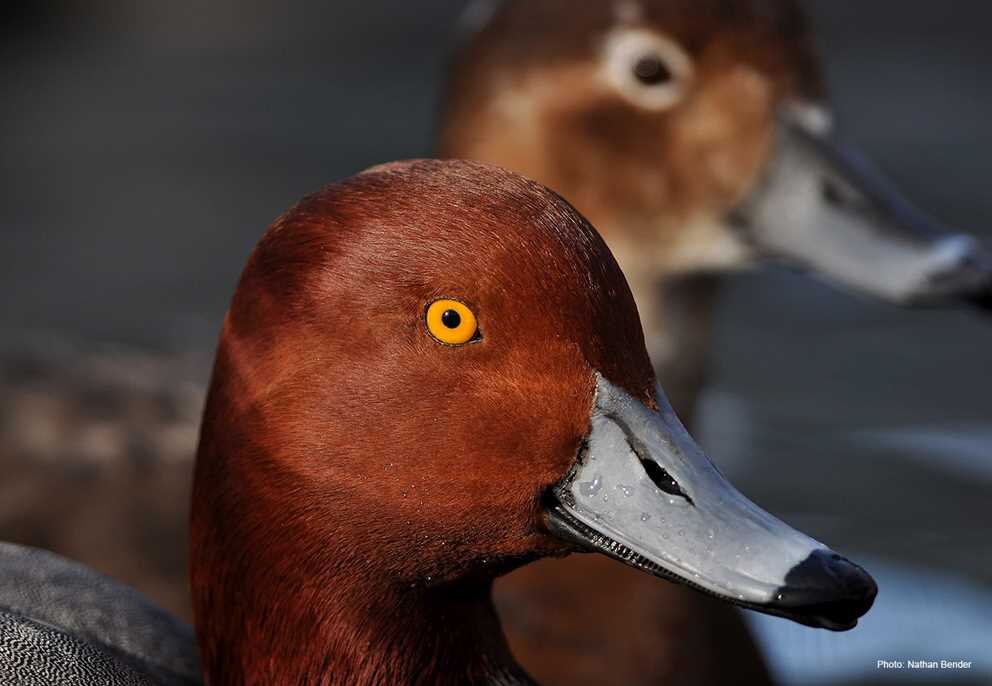Kentucky is home to many species of waterfowl. Both ducks and geese spend much of there time in Kentucky.
Forty-three species of waterfowl make Kentucky home for at least part of the year. We will talk about some of the more common ones you may see locally.
Read further to learn about some common species and what you can do to improve habitat, feeding wild ducks and geese.
Canada Goose
Canada Goose (not Canadian goose as often said) is easy to spot with their black head and neck, white cheeks and chin. Their range covers North America. There are seven subspecies however, they all look very similar.
Canada geese are primarily herbivors. They eat a wide range of vegetation including algae and grains as well as insects and sometimes small fish.
Canada’s are monogamous, and most couples mate for life. If one dies, the other may or may not find a new mate. They have been observed to grieve and not leave the place where there mate died.
In spring the parents build a nest, usually near water, and the female lays an average of five eggs. Both parents take turns protecting the nest while the eggs incubate. Inncubation lasts from twenty four to thirty two days.
Canada geese are quite formidable when protecting their young.
Puddle and Diving Ducks
We divide ducks in to two interesting categories.
Puddle or Dabbling ducks live around marshes farm ponds and creeks. The typically tip over to pull water plants from the bottom. These ducks are good swimmers and can dive for food if necessary but just prefer areas of shallow water with abundant vegetation.
Puddle ducks are sure footed and move well on land. Mallards and wood ducks fit this category.
Diving Ducks inhabit large lakes, rivers and coastal areas. They often “run” across the water when going airborne. They have large feet which they use as rudders when they dive to catch fish and shellfish. They have a larger percentage of meat in their diets.
Wood Ducks
Wood ducks range over much of the United States and are common in Kentucky, especially the western part of the state.
Wood Duck Range
credit - www. fw.ky.gov
Wood ducks live near streams, ponds, marshlands, and lakes. They prefer areas with shallow water and abundant water plants, insects, and invertebrates. Wood ducks also eat nuts such as acorns, and hickory nuts and seeds of cypress, sweetgum, and buttonbush plants.
The buttonbush is a wonderful habitat plant that is native to wetlands and along waterways. The flowers and seeds provide food for ducks, bees and butterflies.
Read more about insects in our garden blog. The Loss Of Insects And How It Affects Your Garden.
In 1886 John James Audubon stated that wood ducks were abundant in Kentucky. However, habitat destruction and overhunting almost wiped them out. Farmers were enlisted and encouraged to put wood duck nesting boxes near there farm ponds. This helped the population recover.
Ducks Unlimited has some great plans to build nesting boxes for Wood Ducks.
Woodies, as they are often referred to are a medium size duck. Males weigh about one and a half pounds are twenty inches long and have a 30-inch wingspan. This wingspan is shorter than other ducks since they often fly in wooded areas and must navigate trees.
Wood ducks migrate south for the winter. Kentucky wood ducks return in late February to mid-March. Ironically, if you see a wood duck in Kentucky during the winter it most likely migrated here from another state to our north.
Wood ducks nest in tree cavities. The females lay between ten and fifteen eggs. Eggs are incubated for thirty days and the clutch typically hatch between mid-May to mid-June. The hen, or female, duck raises her brood for the next ten weeks until they are ready to be on their own.
One reason for the large clutch of eggs is that sadly, only about ten percent survive.
Mallard
Anas platyrhynchos
The mallard is the most common wild duck in North America and we have plenty of them here in Kentucky. They are very adaptable and will live around large lakes, small farm ponds, marsh areas, and slow-moving rivers. The males are easy to recognize with their green heads and white ring on the neck.
Mallards are native to North America but as you can see by the map they have been introduced all over the world. They are excellent flyers and have been clocked at 55 miles per hour and can travel up to 800 miles in one day.
Mallard Distribution. Blue is nonbreeding areas and dark green is permanent residents. In Kentucky, we fall right about on that line. Alexander Kürthy - Made with Natural Earth.
Mallards are a mid-sized duck. They average about two feet in length and males weigh about three pounds. Their wingspan reaches three feet and they are excellent flyers.
The mallard is the ancestor of most of our domestic ducks. Only two breeds of wild ducks have been domesticated. They are the mallard and the muscovy duck. You can tell a mallard and its descendants by a curly feather on the base of the male duck.
They are omnivores and eat a variety of vegetaton, insects and worms.
Mallard pair for one season and are typically monogamous. However, sometimes a paired male will pursue females other than their mates. Couples get together in the fall, but courtship may last all winter.
The female incubates the eggs and takes care of the ducklings. She makes a nest near a body of water and lays eight to ten eggs. They take X days to hatch and stay with their parents for two months.
Mallards live an average of ten years in the wild. The oldest recorded wild mallard was shot at the age of 27. They were wearing a leg band with the date of banding.
Redhead Duck
Aythya americana
The Redhead duck is a diving duck and lives on more open water. In Kentucky we see them during the winter on large lakes.
The males are easy to spot buy there rusty colored head and blue/gray bills. The females head is a more reddish brown than the male.
Redhead ducks, male in front. Picture from Ducks Unlimited
Like other ducks, they may be preyed upon by birds of prey such as owls, hawks and eagles. In addition, other aquatic life such as snapping turtles and minks prey on the young.
Rehabilitation
At Fox Run EEC, we are not licensed to take in birds. Sadly there are very few persons licensed for birds and many limit their work to birds of prey. The bird licensing through the federal government is rather extensive.
Birdwatching
Kentucky is a bird watchers paradise. No wonder John James Audubon decided to take up residence here. Here are some great places around the state to view waterfowl and possibly check off some species from your life list.
Located in Morehead, Kentucky, Minor E Clark Fish Hatchery is a great spot to watch for ducks. Fifteen different species of ducks have been observed there and they have annual nesting wood ducks and mallards.
The grounds are open year-round and in summer you can tour the fish hatchery.
Sloughs Wildlife Management Area
Located about ten miles west of Henderson, KY on the Ohio River. many species of geese, ducks, wading birds, and shorebirds attracted to the local wetlands. Sloughs have up to 40,000 geese and 30,000 ducks annually. Winter is a great time to actually see the Greater White-fronted Goose and Tundra Swan.
Operated by the Kentucky Department of Fish and Wildlife, Sloughs is recognized by the National Audobon Society as an “Important Birding Area”. In addition, they are considered a High Priority Area by Ducks Unlimited. the WMA hosts.
Land Between the Lakes
This peninsula, surrounded by Kentucky Lake and Lake Barkley.is a bird lovers slice of heaven. Waterfowl abound with both dabbling and diving duck species. They even get Sandhill Cranes and White pelicans stopping by on their migrations.
Hazards of Feeding Waterfowl
Do you ever wonder why you see signs that ask you not to feed the ducks? Sometimes you see machines selling duck food at local parks. You may wonder why should I buy food when I can just throw them my old bread crusts?
It can be fun to go to the park and feed the ducks and have an up-close experience with nature. However, it is very very bad for the ducks!
Bread, especially cheap white (and gross) bread can actually lead to a number of health conditions. If you must feed waterfowl at parks bring whole grains or a poultry food designed for waterfowl.
Angel Wing
Angel Wing is a serious nutritional and overall health disorder that can cause serious deformities in the bird’s wings. When a goose or duck gets angel wing they can no longer fly and are subject to predators. Angel Wing causes a bone growth deformity in the wings which then loose feathers and stick out at odd angles.
Two problems happen when people feed bread to waterfowl. The high carb diet is bad for them. It is basically a junk food diet and akin to you eating cookies all day. In addition, when fed at a given location the ducks do not move around foraging. This causes a loss of muscle tone and poor bone development.
A Canada Goose with Angel Wings. You can see how this would prevent him from flying.
Author, Ame Vanorio has 25+ years of experience living off-grid, is a certified teacher, and an organic farmer. She is the director of Fox Run Environmental Education Center and a licensed wildlife rehabilitator.
Ame teaches classes locally and online and is a teacher and author.














Both Bald and Golden Eagles are iconic symbols of American power and freedom